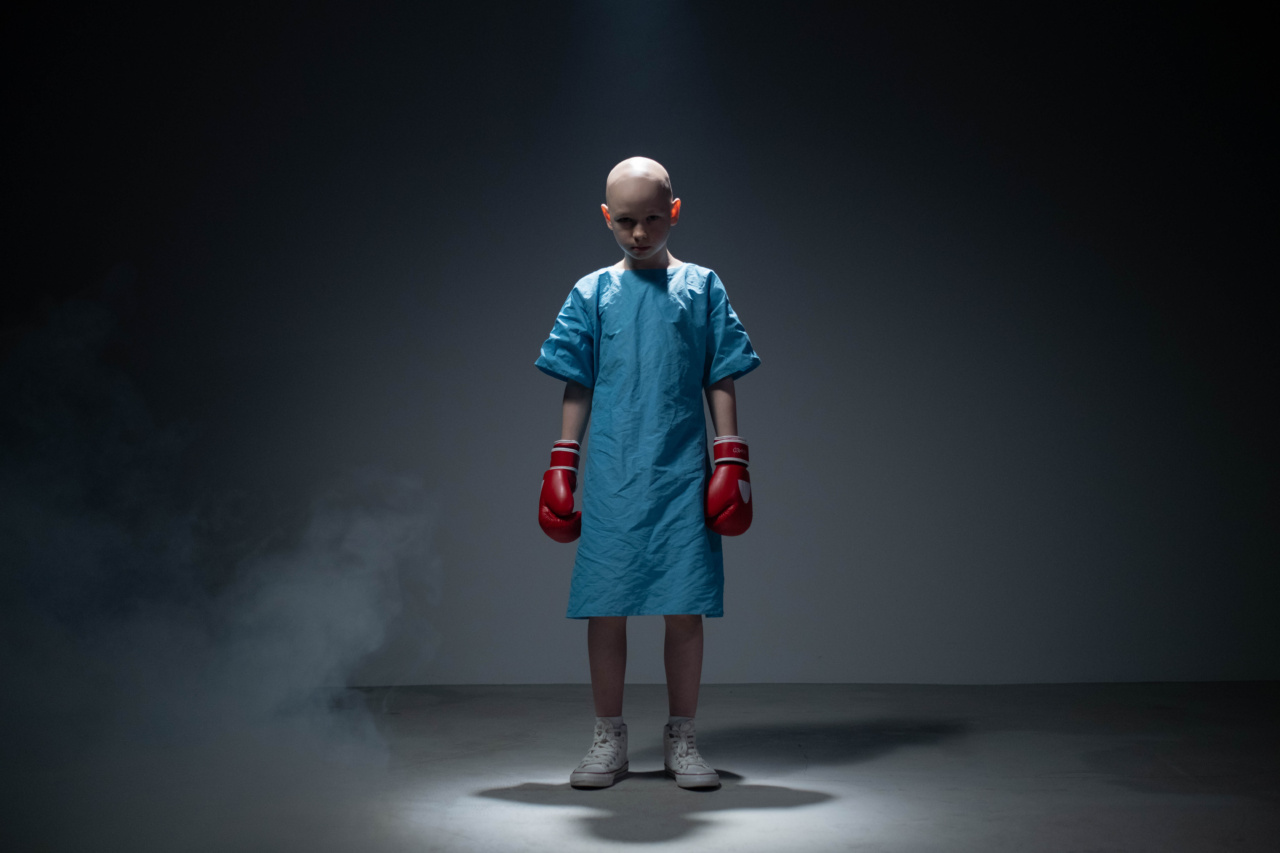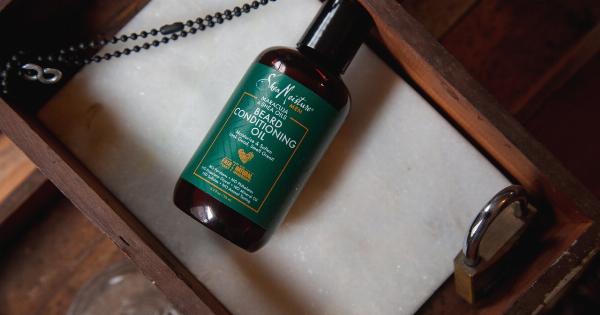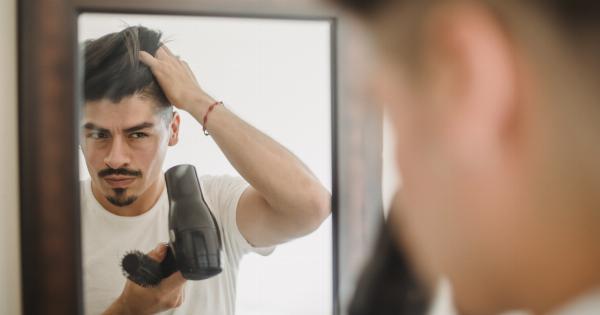Alopecia areata is an autoimmune disorder that causes hair loss in small patches. It occurs when the immune system mistakenly attacks the hair follicles, leading to hair falling out in clumps.
While the exact causes of alopecia areata are still unknown, researchers believe that it may be a combination of genetic and environmental factors.
Recognizing the Symptoms
The most common symptom of alopecia areata is hair loss in circular or oval patches on the scalp. However, it can also affect other areas of the body, including the eyebrows, eyelashes, and even the beard in men.
In severe cases, it can cause total hair loss on the scalp (known as alopecia totalis) or the entire body (known as alopecia universalis).
Besides hair loss, individuals with alopecia areata may experience tingling or slight itching in the affected areas before the hair falls out.
It is important to note that alopecia areata does not cause any other physical symptoms, and individuals with the condition are generally healthy otherwise.
Diagnosis and Medical Treatments
If you suspect that you have alopecia areata, it is crucial to see a dermatologist for an accurate diagnosis. The doctor will examine your scalp and may perform a skin biopsy or blood tests to rule out other possible causes of hair loss.
While there is no cure for alopecia areata, there are various medical treatments available to manage its effects. Here are a few commonly used treatments:.
1. Corticosteroids
Corticosteroids are anti-inflammatory drugs that suppress the immune response responsible for attacking the hair follicles. They can be administered in different forms, including topical creams, injections, or oral medications.
Your dermatologist will determine the most suitable form of corticosteroid treatment based on the extent of your hair loss.
2. Topical Immunotherapy
In this treatment, a chemical is applied to the affected areas of the scalp to provoke an allergic reaction. This reaction helps to stimulate the hair follicles and encourage hair regrowth.
Topical immunotherapy is typically used when corticosteroids are ineffective or for individuals with extensive hair loss.
3. Minoxidil
Minoxidil is a topical medication commonly used to treat androgenetic alopecia (male or female pattern baldness). However, it has also shown some positive results in promoting hair regrowth for those with alopecia areata.
It is available over-the-counter and can be applied directly to the scalp.
4. Anthralin
Anthralin is a synthetic substance that alters the immune function within the skin. It is typically used as a cream or an ointment and needs to be left on the scalp for a specific period before being washed off.
Anthralin can also cause temporary skin irritation, so it should be used under a dermatologist’s guidance.
It is important to remember that these treatments may not work for everyone, and results can vary. Consulting with a dermatologist will help determine the most suitable treatment option for your specific condition.
Exploring Natural Remedies
In addition to medical treatment, some individuals with alopecia areata also explore natural remedies to cope with its effects. While not scientifically proven, these remedies may offer relief for some.
Here are a few natural remedies that some individuals find helpful:.
1. Essential Oils
Essential oils like lavender, rosemary, and peppermint oil are believed to promote hair growth and improve scalp health. They can be diluted with a carrier oil, such as coconut or jojoba oil, and gently massaged onto the scalp.
However, it is essential to patch test these oils and discontinue use if any irritation occurs.
2. Aloe Vera
Aloe vera has soothing and moisturizing properties that can help alleviate scalp irritation caused by alopecia areata. The gel can be directly extracted from an aloe vera plant and applied to the scalp.
Leave it on for at least 30 minutes before rinsing it off with lukewarm water.
3. Onion Juice
Onion juice is believed to promote hair regrowth due to its high sulfur content. Extract onion juice by blending or grating an onion and apply it directly to the scalp. Leave it on for 15-30 minutes before washing it off.
Note that onion juice has a strong smell, so it is recommended to follow it with a gentle shampoo and conditioner.
4. Scalp Massage
Regular scalp massages can stimulate blood circulation to the hair follicles and promote hair growth. Use your fingertips to gently massage your scalp in circular motions for a few minutes each day.
You can use a few drops of essential oil or warm coconut oil to enhance the massage’s effects.
Managing Emotional Impact
Dealing with alopecia areata can have a significant emotional impact on individuals. Hair loss, especially when it affects the visible areas of the body, can lead to feelings of self-consciousness, low self-esteem, and even depression.
Here are some tips to help manage the emotional effects:.
1. Seek Support
Joining support groups or connecting with others who have alopecia areata can provide a sense of community and understanding. Sharing experiences and emotions with people facing similar challenges can be incredibly comforting and empowering.
2. Talk to a Therapist
Consider speaking with a mental health professional, such as a therapist or counselor, who can help you process your emotions and develop strategies to cope with the emotional impact of alopecia areata.
Therapy can provide a safe space for discussing and working through feelings of sadness, anxiety, or self-doubt.
3. Experiment with Hairstyles
Experimenting with different hairstyles and hair accessories can help boost confidence and create a sense of control over one’s appearance.
Consult a hairstylist who specializes in working with individuals experiencing hair loss to explore suitable options.
4. Embrace Self-Care
Engaging in self-care activities can help improve overall well-being and make coping with alopecia areata easier.
Prioritize activities that make you feel good, whether it’s practicing yoga, meditating, taking long baths, or engaging in hobbies you enjoy.
Conclusion
Alopecia areata can be a challenging condition to manage, both physically and emotionally. While there is no guaranteed cure, medical treatments and natural remedies can help cope with its effects.
It is essential to consult with a dermatologist to determine the most suitable treatment plan for your specific case. Additionally, addressing the emotional impact and seeking support can greatly assist in managing the overall well-being of individuals with alopecia areata.


























